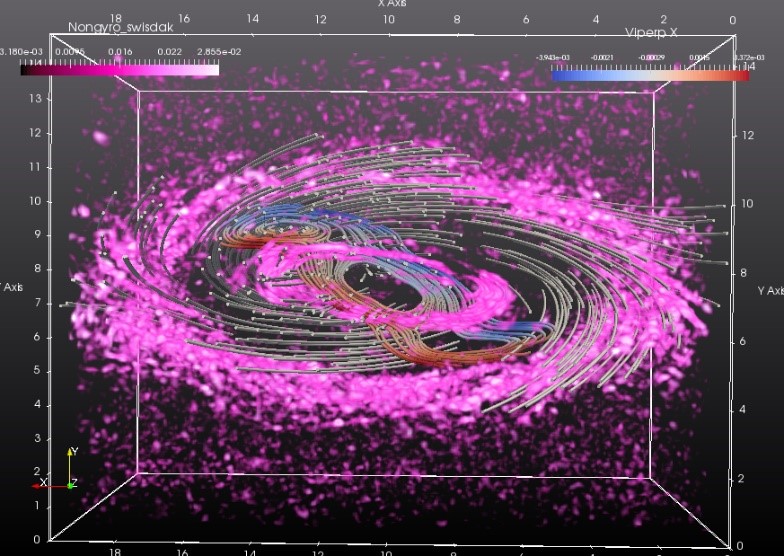iPic3D
Responsible Partners: KU Leuven

Implicit Particle-in-cell 3D (iPic3D) is a Particle-in-Cell (PIC) code developed to study plasma dynamics at the kinetic scale. In this open-source code (the individual macro) particles of a plasma are evolved in a Lagrangian framework whereas the moments (electric current, density, etc) and the electric and magnetic fields are tracked on a Eulerian grid. It solves the Maxwell-Vlasov equation self-consistently using the implicit moment method. The three main kernels of iPic3D are (a) Particle Mover, (b) Moment Gatherer, and (c) Field Solver. A high-level description of these modules (and the code) can be found in §7 of Deliverable 1.2 (see deliverable section).
Owing to the “implicitness” of the method involved, unresolved scales do not result in any numerical instabilities, as opposed to explicit PIC methods, where one is restricted to the Courant-Friedrich-Lewy constraint. This allows to choose time step sizes and grid sizes that can be 10 − 100 larger than those used in traditional PIC codes.
D is a fully electromagnetic massively parallel particle in cell based on the semi-implicit approach to address multiple scale problems in plasma physics with application to space, astrophysics, laboratory experiments and nuclear fusion. The code is publicly available and in use by many research teams in Europe, America and China. A new implementation with the Energy Conserving Semi-Implict method (ECSIM) allows exact energy conservation and increased stability.
iPic3D is publicly available on github:
https://github.com/Pranab-JD/iPIC3D-CPU-SPACE-CoE